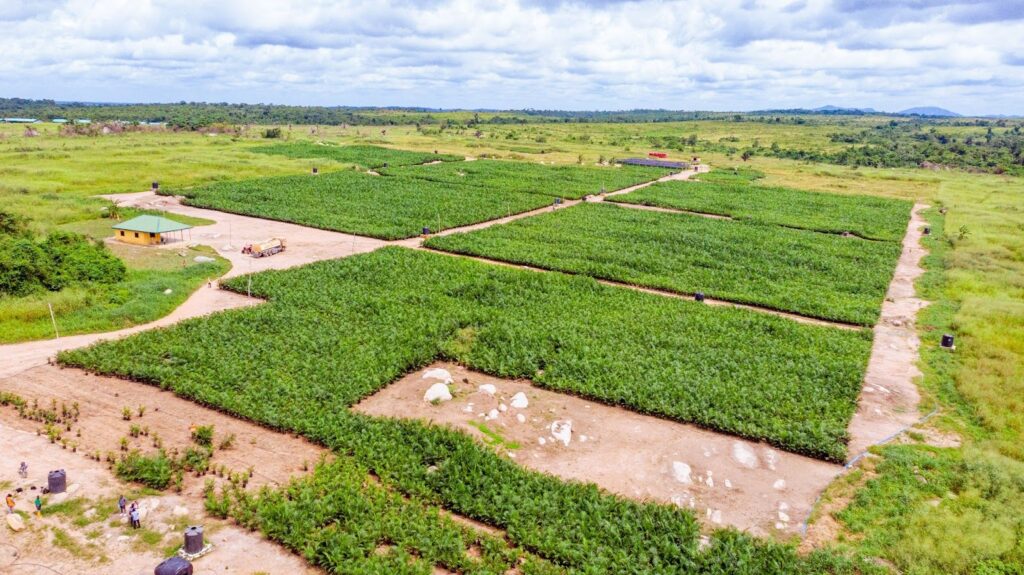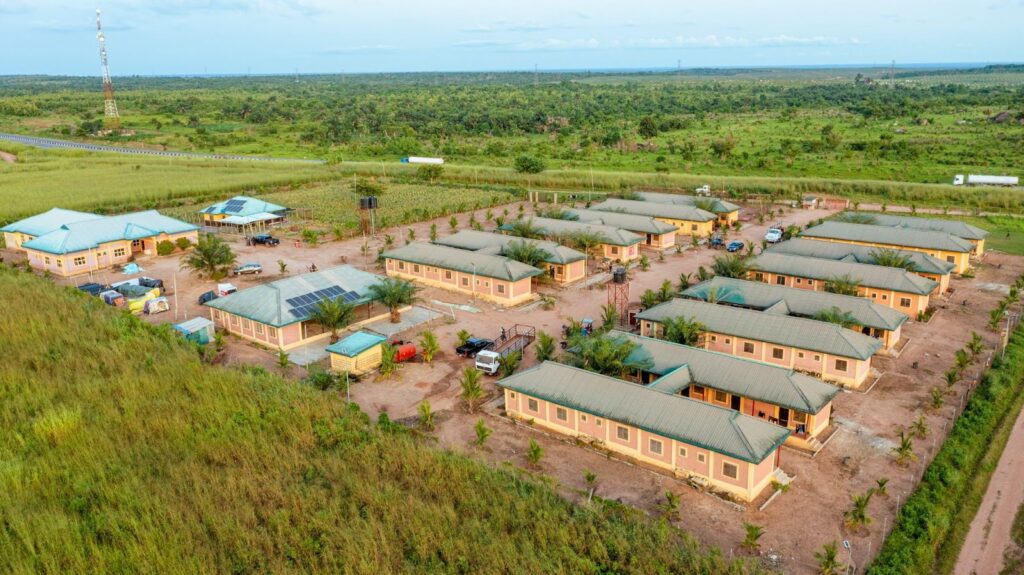SAO Agro’s Palm Plantation: Reshaping the Agri-Business Landscape and Boosting Local Economies.
When we broke ground on a large-scale oil palm plantation project, the plan looked ambitious on paper. What’s happening today is more audacious! The farm isn’t just growing palms; it’s pulling entire communities into a new local economy built around work, infrastructure development, and steady income.
With thousands of hectares allocated to the company, SAO Agro set out to develop one of the biggest single-site plantations in the region. The team created a methodical approach to turn raw land into a functioning, productive estate.
What makes this project important is not just the numbers planted but the ripple effect across communities, workers, roads, small businesses, and local economies.

Laying the Foundation: How Operations Scaled
SAO Agro began planting in 2023, starting with roughly 60,000 palms, and has currently planted over 180,000 palms. That first wave of planting laid the foundation for everything that came after. As soon as these fields began to mature, new demands emerged: better seedling supply, more planting cycles, and a stronger base for expansion.
To support the next phase, SAO Agro developed a pre-nursery, a greenhouse-style structure that held around 100,000 seedlings, keeping them protected and closely managed until they were strong enough to move. Once the old nursery had been cleared out, all these pre-nursery seedlings were transplanted to a brand-new nursery site. The new nursery is designed to scale up to one million seedlings at full capacity, making it possible for the company to plant at a pace that very few new agricultural projects can achieve.

The nursery isn’t just bigger; it’s better equipped. Solar-powered lighting now covers the area at night, security houses and worker accommodation have been built, and management invested in a stronger fleet of machinery.. All of this is to ensure that planting activities no longer slow down due to equipment delays or labour shortages.
Soil management
By the time planting began in 2023 and 2024 across the different locations, the team had developed a smart land-use system. One of the most important practices is “stacking,” where felled trees are arranged in lines throughout the field rather than burned or cleared away. Over time, these stacks decompose and release nutrients that enrich the soil. This approach reduces erosion, improves soil structure, and naturally increases organic matter.
Alongside this, SAO Agro introduced cover crops that help fix nitrogen and protect the soil from heavy rainfall and sun exposure. These crops eventually dry out and add more organic matter to the land.
Jobs and Income: The Most Visible Impact
The economic impact of the project may be the most visible sign of transformation. Before the plantation came, many young people across the surrounding communities had little or no access to steady work. The expansion of nursery and field operations created a wide range of jobs, security roles, nursery work, field planting, tree felling, equipment operation, and general labour.
People with formal education were placed strategically, while those without certificates found roles that didn’t require them. The ripple effect has been huge. Many workers now earn at least $10-20 per day during peak planting seasons. Over time, informal businesses began to appear around the farm: food vendors, canteens, bike repairers, mechanics, carpenters, and small supply shops. The farm didn’t just hire people; it created a huge economic opportunity for its host communities.
Infrastructure
Infrastructure development multiplied this effect. To move seedlings, workers, machinery, and harvested produce across the estate, SAO Agro built over 21 kilometres of road and constructed several bridges and culverts. These roads are not exclusive to the farm, as residents use them to transport cassava, palm fruit, timber, vegetables, and household goods.
The plantation roads have effectively connected previously isolated villages to markets and neighbouring communities.
But the journey hasn’t been without challenges. Early stages of land clearing led to tension with local communities, some of whom had been using certain portions of the land for years. There were protests and misunderstandings. To address these issues, SAO Agro deepened engagement with community leadership, including the Kings, youth leaders, and the Community Liaison Officer. This has led to better communication and more stable working conditions.
Agricultural Progress and Field Performance
Field survival rates have improved as management strengthened weeding and maintenance routines. Weed pressure, which attracts rodents and grasscutters, has been reduced through systematic circle weeding and the use of contractors for heavy slashing. This reduces seedling mortality and supports stronger establishment. While the official census is still ongoing, early indicators show healthier fields, especially in areas planted just before the rainy season.
SAO Agro plans to release more accurate projections once the fields complete their first full harvest cycles. What’s clear, however, is that starting with over 180,000 palms in the first major wave gives the company a strong launch point. Combined with the new nursery’s million-seedling potential, the plantation is positioned for rapid expansion and strong revenue growth in the coming years.
In the end, SAO Agro’s palm plantation is not just an agricultural development. It is a catalyst for economic and social change. It has reshaped the landscape physically, economically, and socially. It has opened roads, stabilized incomes, strengthened local commerce, and created a pipeline for long-term agricultural expansion. The story is still unfolding, but what’s clear is that this project has already transformed the region, and the scale of that transformation will only grow as more fields mature and the nursery continues to expand.